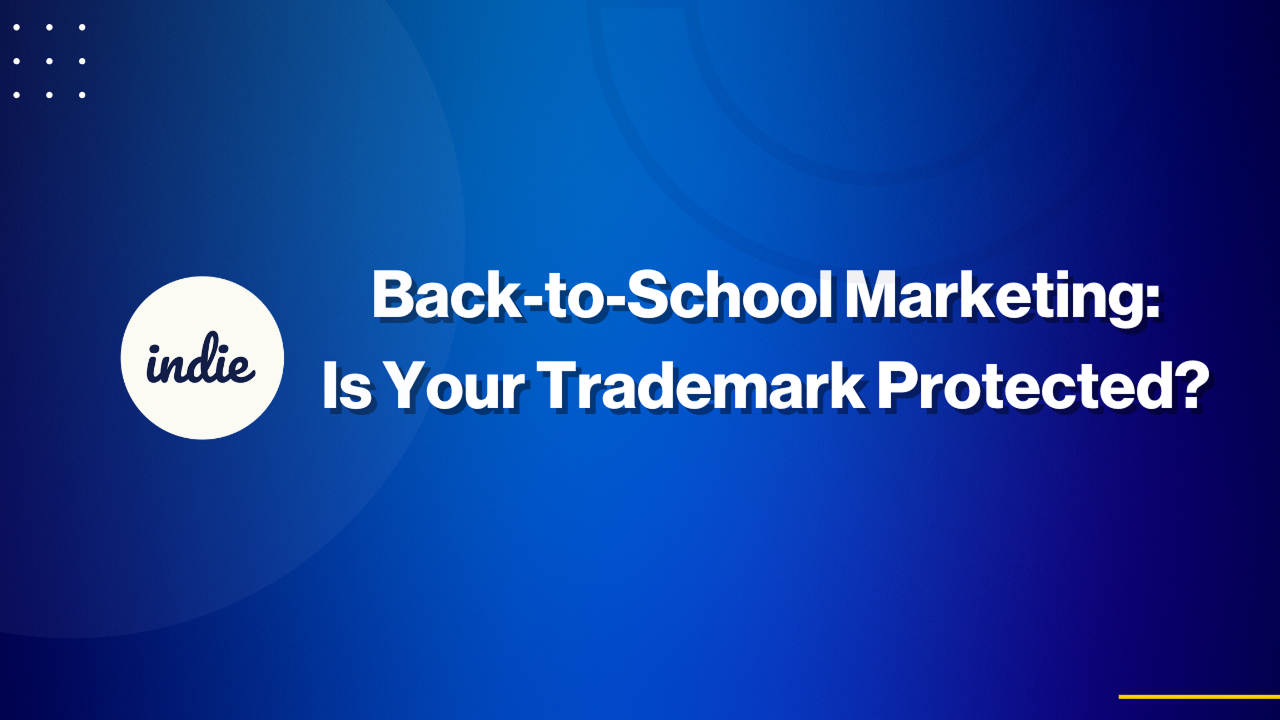If you’ve spent time and money building your Back-to-School brand, you don’t want someone else profiting from your work. That’s where trademark protection comes in.
What Is a Trademark and Why It Matters
In the U.S., a trademark is a word, phrase, symbol, design, or combination of these that identifies your goods or services and sets them apart from others. Examples include:
- Your company’s name
- A Back-to-School campaign slogan like “Smart Start Savings”
- A logo you put on backpacks or advertisements
Unlike some countries, the U.S. is a first-to-use system. This means you can gain rights in a mark by using it in commerce before registering it. However, federal registration with the U.S. Patent and Trademark Office (USPTO) gives you stronger, nationwide protection and enforcement tools.
Why Trademark Protection Is Critical During Back-to-School Season
Back-to-School is one of the largest shopping events of the year in the U.S.—the National Retail Federation (NRF) projects that in 2025, consumers will spend over $41 billion on school-related purchases. Increased marketing exposure can make your brand a target for:
- Direct knock‑offs of your slogan or logo
- Look‑alike brands designed to confuse customers
- Online infringement through ads, websites, or social media
With a registered trademark, you can:
- Prevent competitors from using a similar mark
- Enforce your rights in federal court
- Use the ® symbol to put others on notice
- Record your mark with U.S. Customs to block counterfeit imports
How to Register a Trademark with the USPTO
Step 1: Search for Conflicts
Before filing, search the USPTO’s Trademark Electronic Search System (TESS) to see if anyone is already using or has registered a similar mark for related goods or services.
Step 2: Prepare Your Application
You’ll need:
- The trademark (word, logo, or both)
- The goods/services it covers (classified under the USPTO’s system)
- A “specimen” showing the mark in actual use (for use‑based applications)
Step 3: File Online
Submit through the USPTO’s Trademark Electronic Application System (TEAS). Filing fees start at $250 per class of goods/services.
Step 4: Examination
A USPTO attorney reviews your application for legal issues, such as likelihood of confusion with existing marks or descriptiveness.
Step 5: Publication & Opposition
If approved, your mark is published in the Official Gazette. Others have 30 days to oppose your registration.
Step 6: Registration
Once the process is complete, you’ll receive a Certificate of Registration.
Keeping Your Trademark Alive
Trademark protection in the U.S. can last forever—if you maintain it. You must:
- File a Declaration of Use between the 5th and 6th year after registration
- File combined Declaration of Use and Renewal every 10 years
- Continue using your mark in commerce without interruption
Failing to file on time will cancel your registration.
“Famous” Marks and Dilution Protection
In addition to standard infringement protection, the Lanham Act protects famous marks from dilution. This means if your mark is widely recognized by the public, you can stop others from using it even on unrelated goods or services—think “Nike” on school lunchboxes or “Apple” on notebooks.
However, this protection applies only to truly well‑known brands, and proving fame in court requires substantial evidence.
Quick Self‑Check Before Launching Your Back‑to‑School Campaign
Ask yourself:
- Is my brand name or slogan already registered?
- Have I checked for similar existing marks?
- Am I using my trademark consistently in ads, packaging, and online?
- Do I know my USPTO maintenance deadlines?
- If my mark is famous, could I qualify for dilution protection?
Real‑World Example: Why Timing Matters
Imagine you create a viral Back-to-School promo called “Campus Hero Deals.” You use it heavily in ads but never register it. A month later, another retailer files a trademark application for the same name. In the U.S., you may still have common‑law rights if you can prove earlier use, but fighting to enforce them in court can be costly—often much more expensive than filing early with the USPTO.
Back-to-School Trends and Trademark Risk in 2025
- NRF projects $41.5 billion in U.S. Back-to-School spending in 2025.
- Online sales are expected to make up over 35% of purchases, increasing exposure to digital infringement.
- The USPTO reports that seasonal marketing phrases are frequent targets for opportunistic trademark filings, especially in apparel, school supplies, and e-commerce.
Action Plan for August 2025
- Search your mark in the USPTO database.
- File your trademark application before the heavy marketing season starts.
- Use your mark consistently across all marketing channels.
- Monitor for infringement, especially online.
- Mark your calendar for USPTO maintenance deadlines.
Final Takeaway
Back-to-School season is prime time for brand growth—but it’s also prime time for copycats. Protecting your trademark now ensures your campaign success isn’t undermined by imitators.
By registering your mark with the USPTO and keeping it in active use, you secure your brand’s legal shield—so you can focus on winning customers, not lawsuits.
Sources
- U.S. Patent and Trademark Office – Trademark Basics: https://www.uspto.gov/trademarks/basics
- National Retail Federation – Back-to-School Spending 2025: https://nrf.com/research-insights/holiday-data-and-trends/back-to-school
- USPTO – Protecting Famous and Well-Known Marks: https://www.uspto.gov/ip-policy/trademark-policy/well-known-marks

